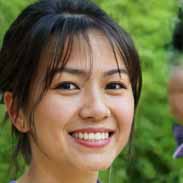ECO2013 – Homework Chapters 1 & 2 – Flashcards
Unlock all answers in this set
Unlock answersquestion
The economizing problem is essentially one of deciding how to make the best use of:
answer
Limited resources to satisfy unlimited economic wants
question
The basic truth that underlies the study of economics is the fact that we all face:
answer
Scarcity
question
Economics may best be defined as the:
answer
social science concerned with how individuals, institutions, and society make optimal choices under conditions of scarcity.
question
The concept of opportunity cost:
answer
suggests that the use of resources in any particular line of production means that alternative outputs must be forgone.
question
The Latin term "ceteris paribus" means:
answer
other things equal.
question
The production possibilities curve illustrates the basic principle that:
answer
if all the resources of an economy are in use, more of one good can be produced only if less of another good is produced.
question
A production possibilities curve shows:
answer
the maximum amounts of two goods that can be produced, assuming the full use of available resources.
question
Refer to the diagram. This economy will experience unemployment if it produces at point:
answer
D.
question
The production possibilities curve:
answer
is a frontier between all combinations of two goods that can be produced and those combinations that cannot be produced.
question
If an economy is operating inside its production possibilities curve for consumer goods and capital goods, it:
answer
can produce more of both consumer goods and capital goods by using resources that are currently idle.
question
Refer to the above diagram. Points A, B, C, D, and E show:
answer
combinations of bicycles and computers that society can produce by using its resources efficiently.
question
Refer to the diagram. If society is currently producing 9 units of bicycles and 4 units of computers and it now decides to increase computer output to 6, the cost:
answer
will be 4 units of bicycles.
question
Refer to the diagram. The combination of computers and bicycles shown by point G is:
answer
unattainable given currently available resources and technology.
question
Refer to the diagram. If society is currently producing the combination of bicycles and computers shown by point D, the production of 2 more units of bicycles:
answer
will cost 1 unit of computers.
question
Refer to the diagram. The combination of computers and bicycles shown by point F:
answer
is attainable but implies that the economy is not using all its resources.
question
The law of increasing opportunity costs states that:
answer
if society wants to produce more of a particular good, it must sacrifice larger and larger amounts of another good to do so.
question
The law of increasing opportunity costs is reflected in a production possibilities curve that is:
answer
bowed in toward the origin.
question
Which of the following will shift the production possibilities curve to the right?
answer
A technological advance that allows farmers to produce more output from given inputs.
question
Which of the following will not produce an outward shift of the production possibilities curve?
answer
The reduction of unemployment.
question
Which of the following is one of the Five Fundamental Questions?
answer
What goods and services will be produced?
question
The market system's answer to the fundamental question "What will be produced?" is essentially:
answer
"Goods and services that are profitable."
question
The market system's answer to the fundamental question "How will the goods and services be produced?" is essentially:
answer
"In ways that minimize the cost per unit of output."
question
The market system's answer to the fundamental question "Who will get the goods and services?" is essentially:
answer
"Those willing and able to pay for them."
question
The idea that the desires of resource suppliers and firms to further their own self-interest will automatically further the public interest is known as:
answer
The invisible hand



